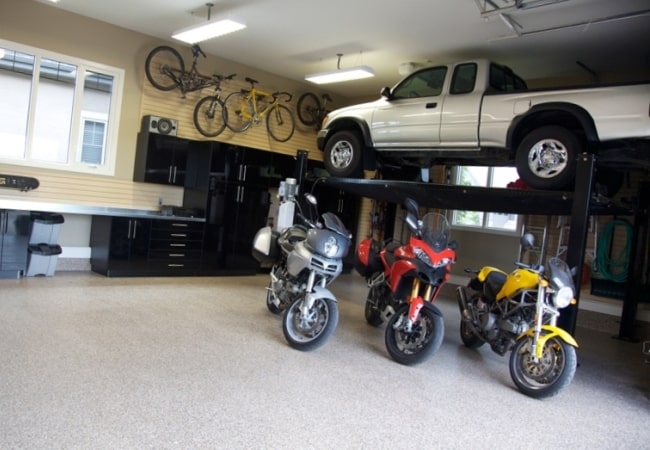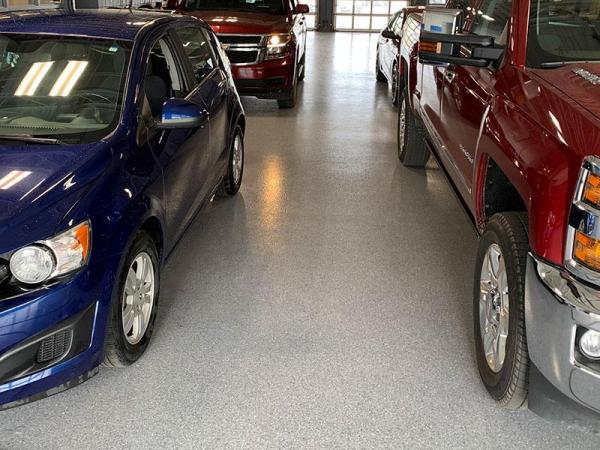Tile is among the most commonly-used design elements in homes, though it is far from common. Tile is incredibly versatile, being able to convey Old World sensibility or make a room feel modern and chic. While it is usually pretty hardy, it is not infallible, and that is where a protective coat comes into play. Putting epoxy on tile is a great way to preserve its classic charm and extend its longevity.
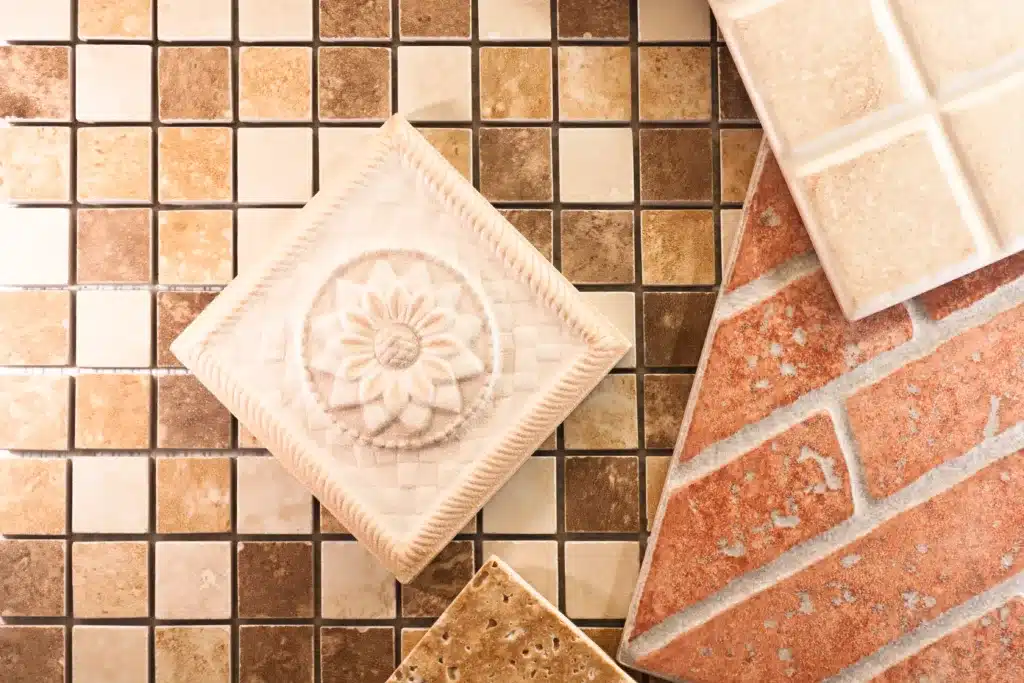
Benefits of Tile
As mentioned before, tile offers a lot of variety, and we mean a lot. Tile can be used as flooring—especially in kitchens, bathrooms, and entryways—but it also makes good countertops, backsplashes, and decorative mosaics. Tile can present a classic beauty or a more modern sophistication, and don’t get us started on colors and designs. The possibilities are endless.
Another perk of tile is that it is easy to put in. This is one of the reasons why it can be installed in so many different arrangements. For all its benefits, however, tile does not last forever. That’s where laying epoxy on tile comes into play.
Benefits of Epoxy
Epoxy protects floors from the elements and the wear of frequent use. It serves as a protective barrier, keeping bacteria, mold, water, and other corrosive elements from affecting the floor underneath. It too is very versatile, coming in a wide range of colors, designs, and depths. While home- and business owners can choose how slick they want their epoxy to be, it always makes a tile floor much easier to clean.
Epoxy is also easy to install. It is significantly less of a hassle to lay epoxy of a different color or design than it is to remove old flooring you’re not fond of. You can decide whether you want to keep the appearance of your current floor or try something totally different. Epoxy coating is usually good for maintaining a similar floor height, not being too additive as a general rule. This is good news for your doors. Overall, an epoxy coating is an affordable means to preserve any floor.
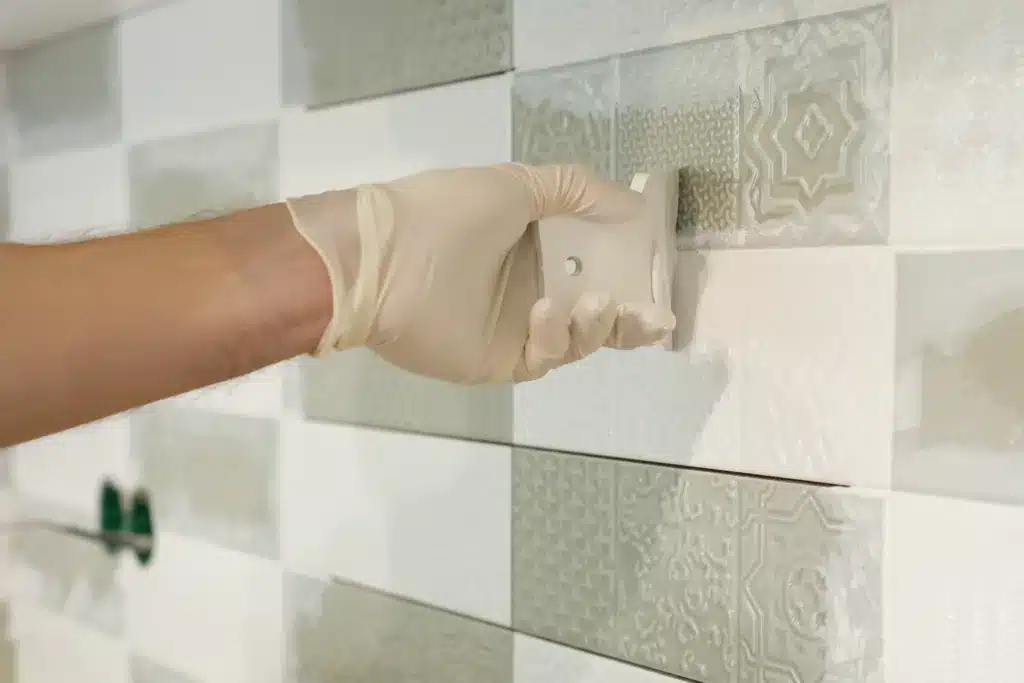
Covering Tile with Epoxy
Putting epoxy on tile creates the perfect marriage of all the benefits of both components. Doing so will revitalize any tile floor, giving it a fresh and updated appearance. It also gives you the opportunity to switch out the appearance of your tile if you prefer. Laying epoxy over tiles in a shower will augment the waterproofing element, and putting epoxy over tile backsplashes will protect them from grease stains and other common kitchen hazards. Before laying epoxy on tile, though, be sure you know what you’re doing.
Will Epoxy Adhere to Ceramic Tile?
Epoxy flooring can be applied to most kinds of tile. However, if tiles have a high-gloss finish or have been treated with sealant, that treatment may affect the epoxy’s adherence. This can be mitigated by performing a few extra steps when preparing the floor to be coated.
How Do You Prepare Tile for Epoxy?
You cannot just slap epoxy on tile. There is quite a bit of preparation involved. First you need to ensure that the tile hasn’t sustained any damage. Tile that is too worn doesn’t provide an effective foundation for epoxy flooring.
High-gloss tiles especially will need to be roughened-up a bit. This can be done by sanding them or applying an etching solution. Even after sanding, some tiles may still need a bit of help for the epoxy to stick. Applying a floor primer usually does the trick.
It is also important to level out your tiles’ height, making them flush with the level of grout. This can be done in two ways: sanding the tiles down to match the grout or applying a leveling compound. Before doing any of this prep work, make sure that your doors to cabinets and rooms will still have plenty of clearance after the epoxy is laid.
Once your tile has been properly treated, it will need to be cleaned thoroughly. You don’t want to trap anything between the tile and the coat. This includes minute debris and bacteria. Lastly, before the epoxy goes on, tiles are typically treated with a glaze.
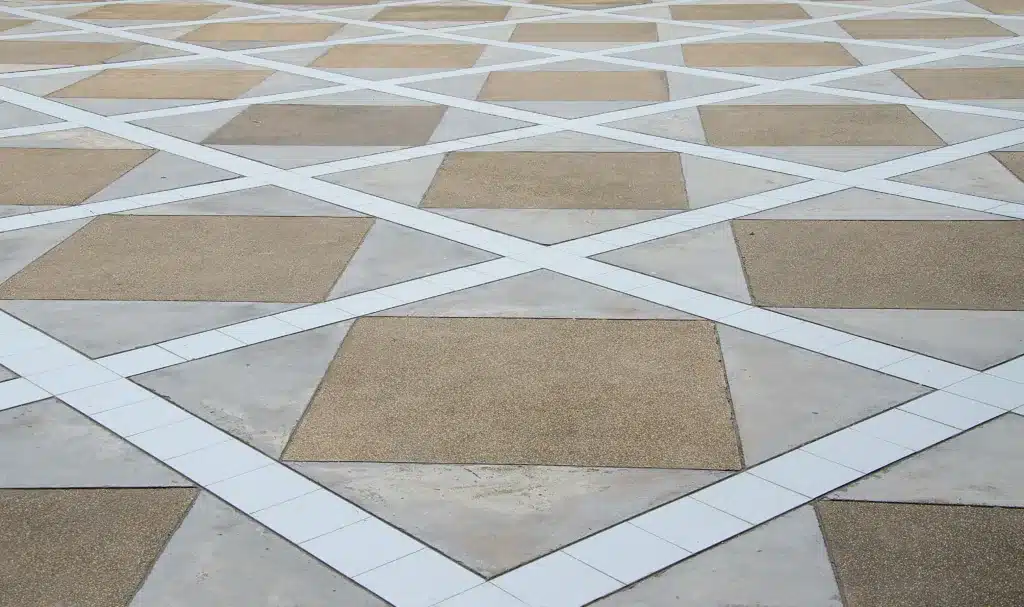
How Long Does Epoxy on Tile Last?
Despite all its benefits, epoxy on tile will not last forever. Tile tends to shift in its foundation, and the grout can become unevenly exposed. You can mitigate this by preparing your floor before the tile is laid. Remove old tile and grout for best results.
It is common for epoxy to last two to three years under heavy wear, places like restaurants, garages, or factory spaces. In areas with less traffic, such as residential kitchens or bathrooms, the coating is likely to last even longer. You can further extend your epoxy’s lifespan with proper care and maintenance.



